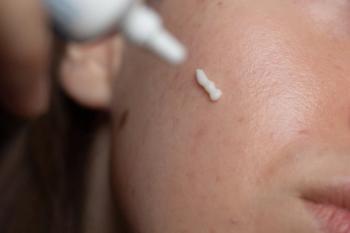
Clarifying Allergy Controversies in Pediatric Atopic Dermatitis
Key Takeaways
- Pediatric atopic dermatitis and food allergies often coexist independently, with true food-triggered AD being rare.
- Singh's paradigm-shifting approach suggests minimal food exposure to maintain oral tolerance in food-triggered AD cases.
At RAD 2025, pediatric dermatologist Lisa Swanson, MD, and allergist Anne Marie Singh, MD, led a dual session aimed at demystifying the connection between food allergy and atopic dermatitis.
“I'm a first timer here at RAD and I'm loving it. I think most of the reason I love it is because as a pediatric dermatologist, I spend 25% of my day talking about atopic dermatitis. I live and breathe atopic dermatitis, all day, every day, and so coming to a meeting devoted to that topic has been very educational and informative for me, and I'm really soaking it all up and living the dream,” said Lisa Swanson, MD, in an interview with Dermatology Times.
Swanson, a board-certified pediatric dermatologist at Ada West Dermatology in Boise, Idaho, co-led a dynamic session on pediatric atopic dermatitis (AD) alongside allergist Anne Marie Singh, MD, at the
A key focus of the session was the complex relationship between AD and food allergies. Although patients with eczema often have higher rates of food allergy, Singh emphasized that true food-triggered AD is rare, occurring in only approximately 2% of patients. In most cases, food allergies and eczema coexist independently, rather than in a causal relationship.2
According to Swanson, Singh also introduced a paradigm-shifting concept regarding food elimination. In patients with confirmed food-triggered AD, complete avoidance of the food may paradoxically increase the risk of developing IgE-mediated hypersensitivity. To mitigate this, she recommends continued minimal exposure to the offending food to help maintain oral tolerance—an approach that contrasts with traditional avoidance strategies and could reshape management practices in pediatric AD.
Swanson discussed therapeutic gaps in related inflammatory skin conditions such as hidradenitis suppurativa (HS) and vitiligo. She highlighted the significant unmet need in HS, describing it as both physically painful and psychologically debilitating, and called for more effective treatment options. Regarding vitiligo, she expressed optimism about the results seen with topical ruxolitinib, but noted that the 10% body surface area limitation hinders broader patient care. Approval of systemic options would be a welcome advancement to expand therapeutic reach in extensive vitiligo cases.
Reflecting on her first-time attendance at RAD, Swanson praised the focused nature of the meeting, especially as a clinician who dedicates a quarter of her practice to managing pediatric AD. She described the experience as both educational and invigorating, reinforcing her clinical passion for treating AD.
References
- Singh AM. Swanson L. Pediatric AD: part 1 & 2. Presented at: Presented at: 2025 Revolutionizing Atopic Dermatitis; June 6-7, 2025; Nashville, TN.
- Li JC, Arkin LM, Makhija MM, Singh AM. Prevalence of food allergy diagnosis in pediatric patients with atopic dermatitis referred to allergy and/or dermatology subspecialty clinics. J Allergy Clin Immunol Pract. 2022 Sep;10(9):2469-2471. doi: 10.1016/j.jaip.2022.05.028
Newsletter
Like what you’re reading? Subscribe to Dermatology Times for weekly updates on therapies, innovations, and real-world practice tips.


















